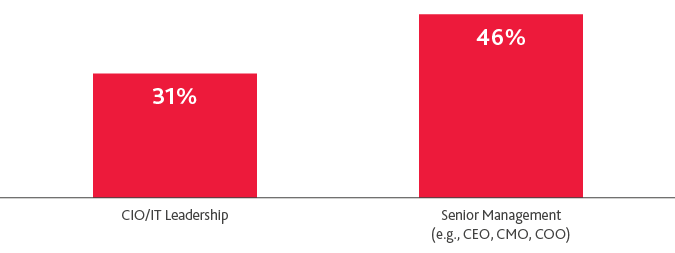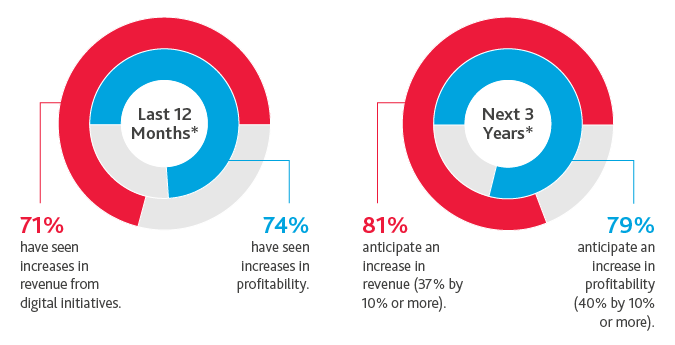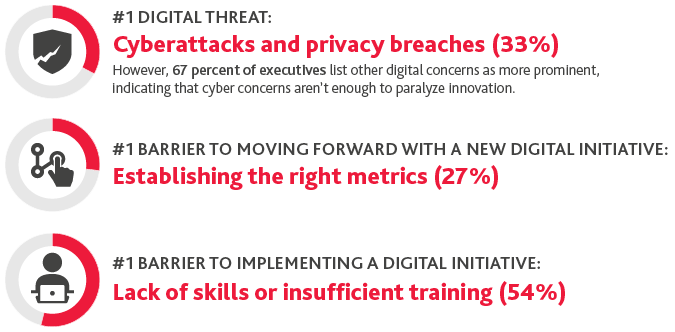Executive Summary
Embracing Digital Transformation
Why Digital Transformation, and Why Now?
Digital transformation: innovation’s holy grail. Today, it’s nearly impossible to walk into a boardroom, client meeting, or innovation brainstorm without hearing the phrase bandied about once, twice, or—more likely—a dozen times.
For some organizations, digital transformation is in their DNA. The adaption to—and adoption of—emerging technologies to further business goals comes instinctively to them.
For the majority of middle market companies, however, digital transformation requires a lot more foresight, consideration, and planning. Organizations are forced to shed old habits, update cultural norms, upskill their employees, and adjust their way of thinking to become a digital business. They must learn to connect the dots between digital initiatives, strategy, and business enablement, and master the art of balancing quick wins with longer-term, strategic investments.
Middle market companies, especially, have a unique challenge: They must learn to navigate the journey without the more robust resources of their larger peers, nor the same level of flexibility and agility as their younger ones. They must start the journey today—and those that do are already behind. While the benefits of digital transformation are clear—including boosted profitability, customer experience, and operational efficiency—the consequences of not undergoing transformation are dire. Mid-market companies that don’t constantly transform and evolve risk being outranked by their competition, losing industry relevancy, and being replaced by their more technologically savvy, nimble competitors. They risk going out of business—and quite possibly, not being missed.
Digital transformation is a lifelong journey, not simply a stop along the way. It is as much of a mindset shift as it is a process or series of steps. Companies that begin their journey today are much more equipped to continue evolving tomorrow. The challenges will be great—but the rewards, greater.
Top Five Survey Findings
1. Developing a digital transformation strategy is middle market executives' #1 digital priority.

2. Digital transformation goes beyond IT.
Digital transformation is no longer a job for just the IT department: Nearly half (46 percent) of all middle market companies state their non-tech C-suite executives (e.g. CEO, CMO, COO) are responsible for leading digital transformation in their organization.
There are many reasons for this, but the fact is, digital transformation is not just about technology: It’s about effectively using the technologies adopted to solve business problems, boost efficiency, and add business value. True digital transformation requires a holistic cultural shift that extends beyond middle market companies’ IT departments.
TECH VS. NON-TECH C-SUITE LEADERSHIP (Digital Transformation Strategy in Progress)

3. Improving customer experience and operational efficiency top mid-market organizations' short and long-term goals.
TOP 5 SHORT-TERM BUSINESS GOALS (12-18 MONTHS)
TOP 5 LONG-TERM BUSINESS GOALS (18 MONTHS-3 YEARS)
4. Digital transformation delivers.
5. Top digital challenges include cyber concerns, measurement, and talent.


SHARE